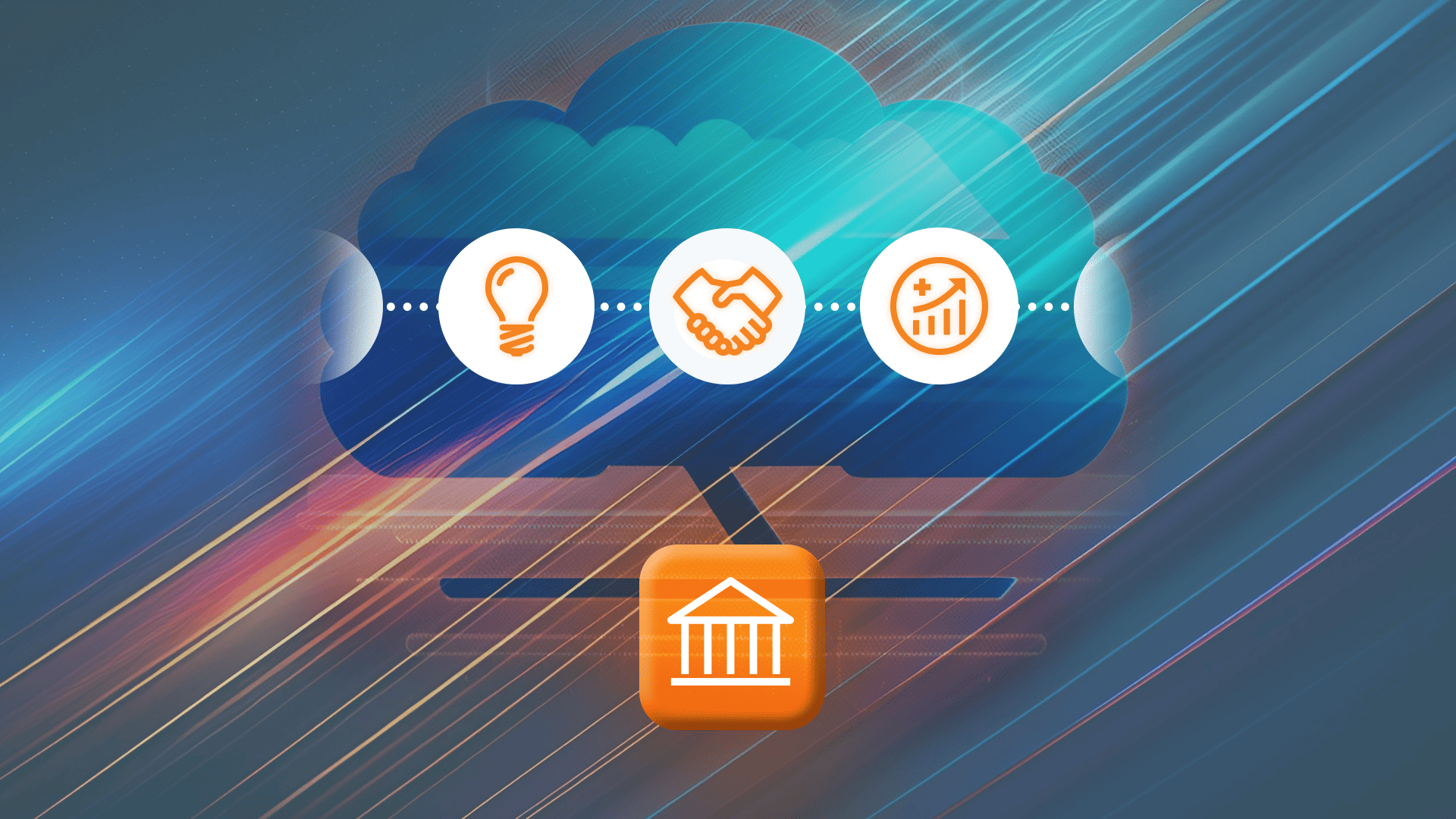Before we start with the PortaBilling alternatives and our explainer of how we see our niche among those great teams and products, let’s do a quick recap. In Part 1 of this “billing beyond telecom” saga, we explained the basic concepts and industries we plan to explore. The “prequel” was about EV charging, smart grid, and utility billing — a business area for which we already have customers. We know the landscape, and we know the objectives. Now the time has come for this question: “Who’s there?”
G2 did great (although somewhat patchy) research into the current key players of the billing software market. G2’s “quadrants map” (hello, Gartner) is interesting and amazingly interactive. However, because it is written from an independent and unbiased POV, it lacks the crucial elements required to understand the PortaBilling alternatives and PortaOne’s role in the SaaS billing ecosystem — namely, the vision of PortaBilling’s strengths (and weaknesses). Yes, we can openly admit that this article is biased. But sometimes being “honestly biased” is better than being “deceitfully neutral.”
Zuora: Among the PortaBilling Alternatives That Inspire
Founded in 2007 (Crunchbase) or 2006 (Investopedia) and headquartered in San Mateo, CA, Zuora completed its IPO in 2018. Zuora’s current valuation floats around $700-800M, with 2023 reported revenue of $396M. In March 2023, Zuora shares jumped almost 28% after a healthy earnings report amidst overall tech market degradation and layoffs. That’s quite a unicorn and a true inspiration for PortaBilling!
What stands behind Zuora’s solid success? First, its well-documented and regularly updated API. We used it as one of the inspiration sources for the PortaBilling API. Second, its Zuora University — an online training platform for end users and implementers. The value of good customer education is immense. That’s why we recently launched PortaOne YouTube courses, including PortaBilling Invoicing 101. Third, Zuora implemented great billing features like catch-up bill runs, on-demand usage ratings, and prepaid with drawdown.
However, Zuora’s features come at a price, or (rather) with a old good “in-app purchases” pricing model. For example, that prepaid with drawdown feature comes within the Advanced Consumption Billing features package. Therefore, Zuora’s customers have to purchase it separately. In contrast, PortaBilling comes with an unlimited, perpetual license. You can still buy a subscription to third-party add-ons (not the key features) via the Add-on Mart.
Stripe Billing: Among the PortaBilling Alternatives That Teach Resilience
Once a stellar unicorn, backed by Elon Musk, Peter Thiel, and the likes, Stripe is now experiencing its “leaner times” (cutting over 1,000 jobs in autumn 2022). However, we believe the Collison Brothers (founders of Stripe) are battle-hardened visionary entrepreneurs, never to be stopped by misfortune. We wish Stripe all the best and will keep an eye on the groundbreaking innovations they introduce to the billing systems market and the fintech ecosystem.
Stripe introduced its Billing product quite recently, in April 2018. Stripe Billing has several powerful features (just like PortaBilling), in particular: a customer self-care portal with an API and no-code building blocks (compared to the PortaOne PBX self-care portal; non-telecom self-care portals are coming soon), and a feature to use webhooks for subscriptions (compare that to webhooks by PortaBilling).
Metronome: Among the PortaBilling Alternatives That Grew Fast
If Stripe and Zuora are “patriarchs” (or “matriarchs,” whatever) of SaaS billing, Metronome is its “rising star.” Established in San Francisco in 2020, Metronome raised $30M in round. A financing from Andreessen Horowitz and a group of CEOs/investors in February 2022. Why did a recent upstart gather that much attention (and money)? A simple two-word answer: consumption billing.
The “age of subscriptions” that Mr. Tzuo and others predicted a decade ago finally arrived. Say hello to your Netflix, YouTube, Spotify, AppleOne, etc. And even say hi to that coloring app your toddler plays on her mother’s tablet. Not to mention Jira, Teams, Slack, Loom, Zoom, Google Workspace, and numerous other SaaS apps you need to run a business. However, history develops in cycles (hello, Mr. Strauss and Mr. Howe).
Guess what? PortaBilling customers have used consumption-based billing for over two decades. And while we understand that consumption-based billing differs in telecom and SaaS, having two decades of successful customer experience does help.
Moesif — Among the PortaBilling Alternatives That Found Their (API) Niche
Founded in 2017 in San Francisco, Moesif specializes in API monetization: from measuring customer journeys to identifying revenue opportunities and charging per API call. In August 2021, Moesif raised $12M in a series A round. Obviously, Moesif has its own API, even two: the Collector API (“enables to log data to Moesif at high volumes” according to Moesif’s documentation) and the Management API (“used to export data for custom reports or to build custom dashboards”).
Contentwise, Moesif runs a blog with posts relevant to the topic of today’s story. They even recorded a podcast titled “APIs over IPAs” 🍻 with a hint of irony. There are also ebooks, infographics, case studies, and (our favorite) comparison guides.
Chargebee — Among the PortaBilling Alternatives That Attract Huge Investments
Founded in 2011 and headquartered (guess where?), Chargebee is a “late bloomer” startup. The total investment Chargebee burned to date is $468.2M, completing the most recent H-round of $250M in February 2022. Chargebee specializes in subscription billing, bringing it head-to-head against giants such as Zuora and Stripe. Besides, Chargebee’s strong point is metered usage and data center billing.
Contentwise, Chargebee runs the Subscription Academy — an educational portal dedicated to various aspects of billing in SaaS, subscriptions, billingOps (a term Chargebee’s team invented), and pricing experiments. Another great piece of content by Chargee is their subscription billing and management guide. Although biased (we really loved that “comparison table”) 😂 it explains the overall billing process well.
Recurly — Among the PortaBilling Alternatives with a Killer Feature
Founded in 2009 and headquartered (yes, you guessed right), Recurly specializes in recurring billing. (As one could have guessed from its name.) It also has a focs on churn management and revenue recognition. Recently, Recurly performed M&A. In autumn 2022, it acquired LeapRev, a startup specializing in revenue recognition and IFRS-15/ASC-606 compliance.
Among the truly interesting features of Recurly are intelligent retries. We wish they did a YouTube explainer for it. However, there’s only a text article on Recurly’s documentation portal. For those not yet illuminated, a “retry” occurs when the billing engine tries charging a customer’s bank account, gets a “transaction failed” status, records it, and then performs a charging operation again after some time. The “intelligence” here lies in mechanisms and communication tools for selecting the timing of retries, the amount of a transaction to retry, and the overall dunning process. PortaBilling has a similar feature.
Zoho Books and Zoho Invoice — Among the PortaBilling Alternatives with the Largest Software Ecosystem 🔗
Once dubbed “Microsoft for small business” and based in Chennai, India, Zoho has provided a constellation of apps for mid-sided teams and home office professionals (hence, Zoho) since 1996. PortaOne used Zoho corporate webmail and calendar for over a decade. However, this story discusses Zoho Books and Zoho Invoice (this product also has its 🎉 jubilee landing).
While PortaBilling is more about “hundreds of transactions per second” and a powerful billing engine, we can admire how Zoho handles simple subscriptions and invoices. Zoho Books goes beyond conventional accounting applications and offers numerous automations. The killer feature of Zoho Invoice is that since 2021 it has been free. Besides, similarly to PortaBilling, Zoho Invoice offers a customer portal where your customers can track their expenses, generate custom invoices, and set up payment reminders.
Maxio — How Two PortaBilling Alternatives Successfully Merged
Baltimore-based Maxio might sound like a new name in the billing and revenue management industry. However, it’s not. Maxio is an outcome of the 2022 merger between SaaSOptics from Atlanta, GA, and Chargify from San Antonio, TX. Both merging teams established themselves in 2009. It gives Maxio 28 years of cumulative corporate experience in billing.
From SaaSOptics, Maxio inherited two great ventures. The first is SaaSpedia — a project explaining SaaS billing and finance metrics for beginners. The second is Maxio SaaS Growth Index, based on customer billing data from Maxio’s systems. Their analysts prepare annual reports explaining the current trends and forecasting the upcoming features. From Chargify, Maxio inherited a great A/R management platform and Payment Gateways, built in the same manner that PortaOne built our Add-on Mart billing integrations.
Our Niche: Use Cases When PortaBilling Shines
Returning to Sun Tsu, our software development and testing expert: “Knowing the place and the time of the coming battle, we may concentrate from the greatest distances to fight.” Soon in this story we will explain the niche we defined as the best suitable for PortaBilling, highlighting the features that currently generate the most value for telecom customers. They might as well generate it for SaaS, IoT, EV charging, smart grid, and data center billing.
Our Licensing Is Flexible (Unlike Some PortaBilling Alternatives)
Did you ever experience that nasty situation when you run a testing script in a cloud overnight… to wake up in the morning and discover that you forgot to remove a production token somewhere? 😱And now you owe Oracle, AWS, Google Cloud, whatever, a ton of money just because of this mistake? Well, the Kodawari-inspired unlimited, perpetual license of PortaBilling will improve your sleep. It gives much more space for experiments and fun (without any strings attached), especially when you are new to the business.

PortaBilling Is Ready for Your Intense Transactional Load
Telecom requires the processing of many transactions. Because telecom is our origin industry, PortaBilling comes high-load ready. In telecom, PortaBilling usually communicates with core network components via the Diameter (Gy) interface for Internet sessions and the Diameter (Ro) for voice calls and SMS.
However, telecom billing has over three decades of experience, while most of the other target industries we just outlined are quite young and much less (if not at all) standardized. The only exceptions are utility billing (hello, TRADACOMS, OSGP, and the gang) and EV charging (hello, ISO 15118, OpenADR, and OCA protocols).
As for SaaS, IoT, and data centers — it’s still the wild-wild west regarding API and standardization. And this situation is an outcome of a harsh competitive landscape, not an absence of economic stimuli. Existing established players, such as Stipe or Zuora, aren’t interested in removing entry barriers to new contestants. That’s why you can have a beautiful walled API garden, in which the vendor intended to work only with its own product.
You Can Customize PortaBilling in Many Ways
In 2021 PortaOne launched Add-on Mart — the add-on store for our flagship products: PortaBilling and PortaSwitch. For the billing side of the business, Add-on Mart provides integrations with the major payment processors, as well as various onboarding wizards and customer self-care portals.
Customer self-care portals deserve a separate mention. As we explained earlier, Stripe follows the same pattern. A self-care portal allows your customers to track their expenses and usage, generate invoices, pay them, launch integrations with their accounting software, and select or change add-ons.
A portal shifts the load from your support team and provides 24/7 availability and flexibility of self-paced communication to your customer base. Currently, your self-care portals are telecom-centered. However, expect news about portals beyond telecom soon. Meanwhile, you can always inquire with sales@portaone.com to determine their pricing and availability.
No-Code, Low-Code… Source Code. Take That, PortaBilling Alternatives!
And the ultimate manifestation of our “radical openness” and your ability to change, enhance, or customize the system any way your business requires is the fact that we provide you with the source code of our solution. Frankly speaking, the preferred way to adjust the PortaBilling functionality is by using the APIs (see the next section) and webhooks we provide and isolating your “business logic” into separate no-code, low-code, or full-stack code applications. However, you can tweak the core functionality if you come up with an idea that can only be implemented by doing so!
Good News for SaaS Entrepreneurs! PortaBilling Offers Real-time Charging
“The next big SaaS player will be the company that solves enterprise billing,” pronounced Aisha Counts writing for the Protocol. At the PortaBilling team, we totally agree with her. As we pointed out in the previous part of this story: there’s an abundance of billing APIs in the current SaaS ecosystem. Yet, each newcomer has to build their own. And that’s a huge entry barrier.
But things will soon change for the better. “We are now rebuilding the PortaBilling API to accommodate modern technologies and industries beyond telecom, as this is one of PortaOne’s strategic goals for 2023–2024,” explains Andrey Kosachenko, CTO of PortaOne. In particular, PortaOne targets pay-per-call commercial APIs. Services such as LLM APIs (hello, ChatGPT), Reface, various face, speech, music, and even plants (we prefer PlantNet) recognition APIs are already growing and trending. We will see even more of those within the next decade as various other ML features get commoditized and APIfied.
Another huge problem with SaaS billing is a (well-grounded) phobia of overspending the cloud provider’s service capacity. “Waking up at night to realize you forgot to remove the production API token on a staging server is any SaaS entrepreneur’s nightmare,” explains Andriy Zhylenko, CEO of PortaOne. Real-time charging from PortaBilling (and the modernized Ukrainian Air Defence system, thank you, Allies) helps you sleep well! With origins in telecom, our real-time charging is ready for an intense transactional challenge. Please inquire with sales@portaone.com to learn more.










